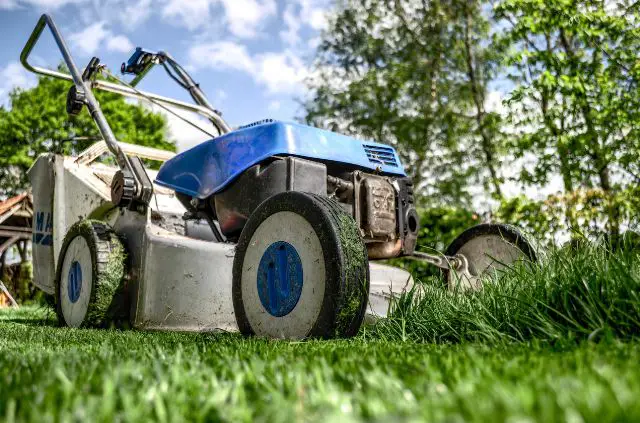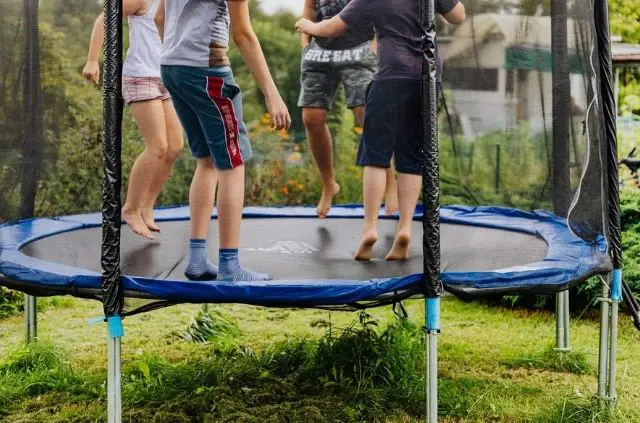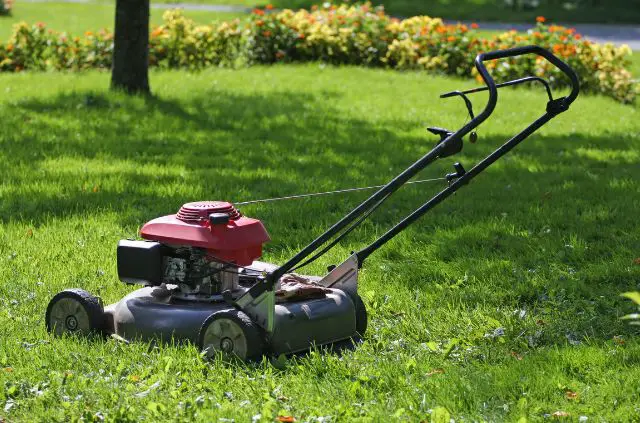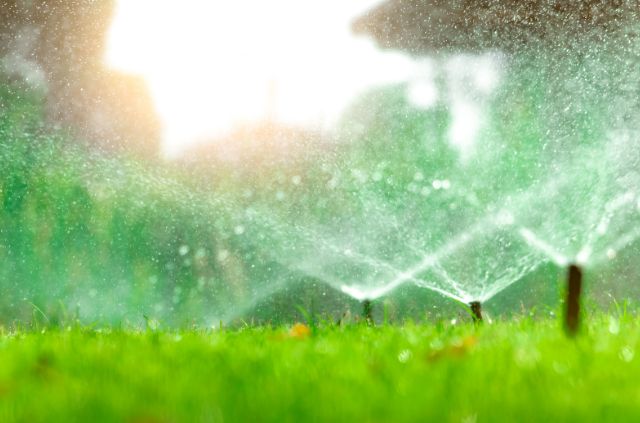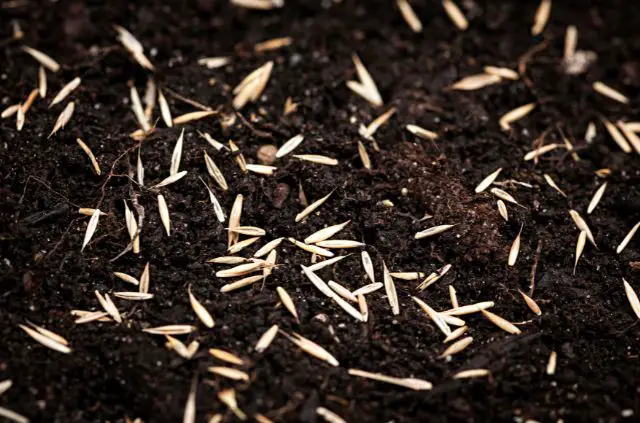Can Grass Grow in Clay Soil?
Having clay soil in your lawn is very common. The problem is that clay can be too hard, or overly soggy and wet. This can be frustrating for homeowners when it comes to yard maintenance. But can grass grow in clay soil?
Yes, it’s possible to grow new grass in clay soil with the right approach. Clay soil isn’t necessarily a bad thing, but it can lead to more work. You will need to approach this material differently – compared to other types of dirt.
Clay soil typically holds more water compared to sand and other materials. The issue is that they can get overly soaked after a heavy rain and restrict grass roots from oxygen. And when the clay finally dries, it will feel like cement.
How to Grow Grass in Clay Soil
The below method will cover how to grow grass in soil on an existing lawn. If you’re starting from scratch (with no grass) the process is a little different. All you need to do is use a tiller on the dirt and add in compost.
1. Adjust Mower Height
The very first step to improving the quality of your soil actually begins with mowing. This may sound too simple, but the truth is that you will need to cut grass low in order to work on the soil for the next steps.
Adjust the mower height blades about 1.5″ off the ground. This length will be short enough when it comes time to aerate the lawn. Grass can damage the aerator, because it can clog the machine easier.
2. Use an Aerator
Using an aerator won’t help much with clay soil – but it’s a useful step in the process. Core aerators will remove small dirt plugs from the ground, in order to relieve compacted soil from heavy foot traffic.
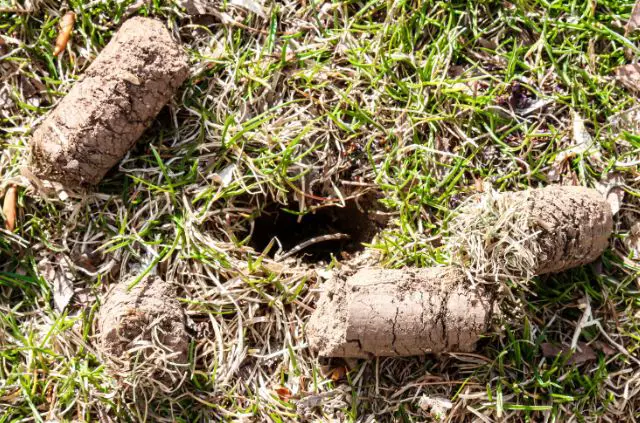
You can rent one of these machines at hardware store. The local business in my area offers both half day and full day rentals. And if you know how to operate a lawn mower, you can figure out how to use an aerator.
3. Lay Down Topsoil
Once you’ve relieved compacted clay soil with a machine aerator, you can add a fresh layer of topsoil. This will fill into the holes (where the dirt plugs were removed) and mix in fresh topsoil with clay.
Most of the time only some parts of your yard will have clay. If this is the case, you will only need to lay down topsoil on these sections. There’s no need to spend the money to cover healthy dirt and grass.
4. Try a Tiller
You can try using a garden tiller to further break up clay soil. This will also help mix in the layer of topsoil that was just applied. This can take a long time with large lawns, so it’s easier to work on one section at a time.
Avoid running a tiller after a hard rain. When the dirt dries it will leave large clumps everywhere in the yard. You also want to be aware of any underground power lines in the area before using this machine.
5. Apply Soil Conditioners
Soil conditioners are another great way to break up clay soil. As you know by now, clay lacks proper space for water and air – which are essential for microorganisms that help plant roots grow strong.
Conditioners will help improve the structure of clay, or how well it holds itself together. This will naturally improve the soil drainage and allow for better oxygen penetration. You can either use organic, or inorganic soil conditioners.
6. Plant Seed
Once the soil is ready, it’s finally time to plant new grass seed. You can do this by first dumping the seed into a lawn spreader. Then, adjust the setting on the device that controls how much seed is being let out.
If you’re working on fresh soil, you will need to use a heavy amount of seed. But if you’re overseeding, or working on places with bare patches, less seed is required. That’s because there’s already some grass established in these areas.
7. Water
New grass seed requires a good amount of water to thrive. A general rule to follow is to keep the top 2″ of soil moist. All irrigation systems are different – which is why you should avoid watering based on time alone.
That’s because some sprinklers let out more water compared to others. You can use the tuna can method, to measure how long it takes for your sprinklers to disperse a certain amount of water. Write this number down and adjust your irrigation system timers accordingly.
Growing Grass in Rocky Clay Soil
Clay soil is one thing, but if you also have rocks in your lawn, additional steps must be taken. Assuming you’re starting on soil dirt (with no grass) the process should begin with a Rototiller.
This will help loosen up the soil and bring rocks that are hidden underneath the dirt up to the surface. On hard clay, it’s best to set the Rototiller to a slow setting. Using the machine too fast will not free up all of the rocks.
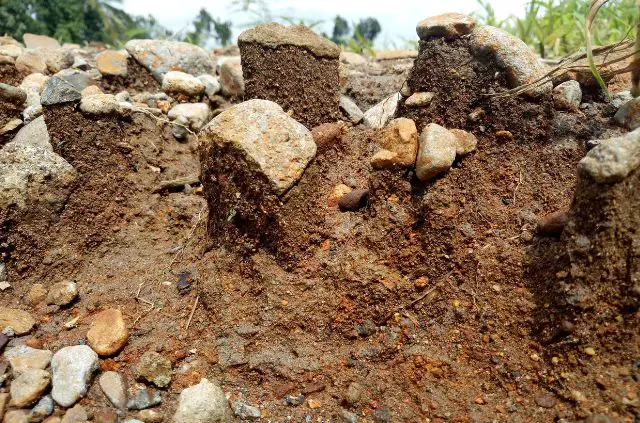
Once the small rocks are exposed, you can rake them into piles. However, even after this step there still might be larger rocks stuck in the dirt. That’s when you can use a pointed shovel to free them from the soil, by creating leverage with your weight.
As you’re progressing through this job, place all of the rocks (both large and small) into a wheelbarrow nearby. This will make you take less trips from your lawn, to wherever you are throwing them away.
How to Improve Drainage in Clay Soil Lawn
Following the steps listed above will help fix your clay soil. But you can also mix compost in the ground to boost the dirt with vital nutrients. Doing this will improve the condition of your soil and its structure.
Compost can come in the form of grass clippings, leaves, and even food scraps. You can create this organic material on your own by saving yard waste and combining it into a compost pile.
Once compost mixes into the clay, it helps break down the soil to allow for more oxygen and water to enter. This natural process will take time, but your clay soil will drain better over time as you continue adding more compost each year.
Search Terms
- Can grass grow in clay soil?
- How to grow grass in clay soil

